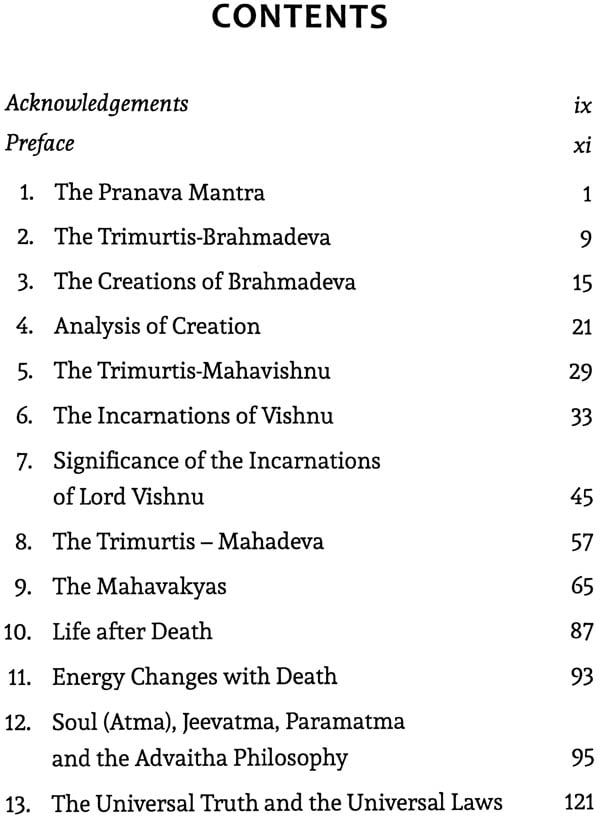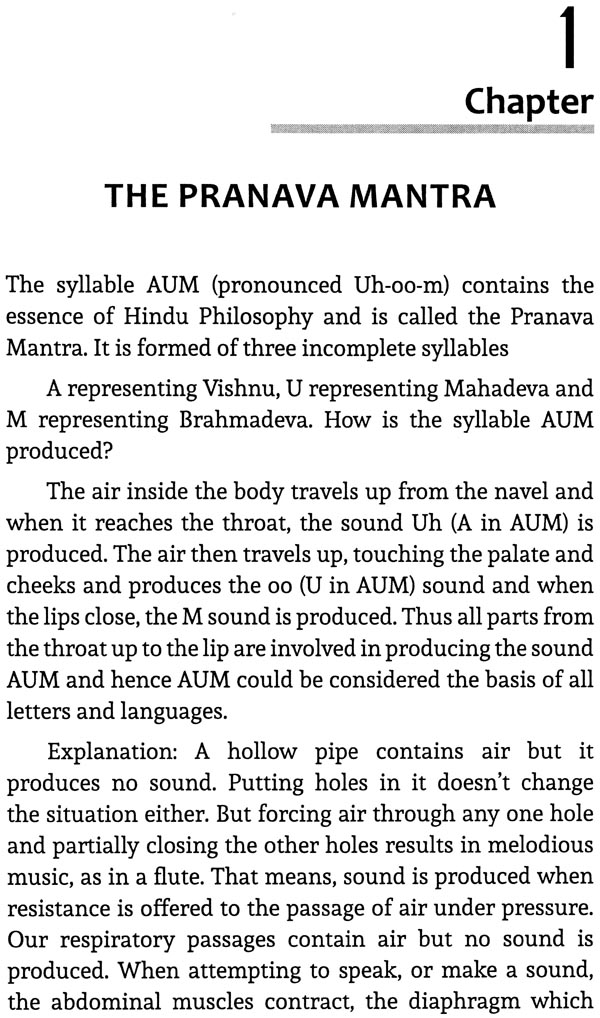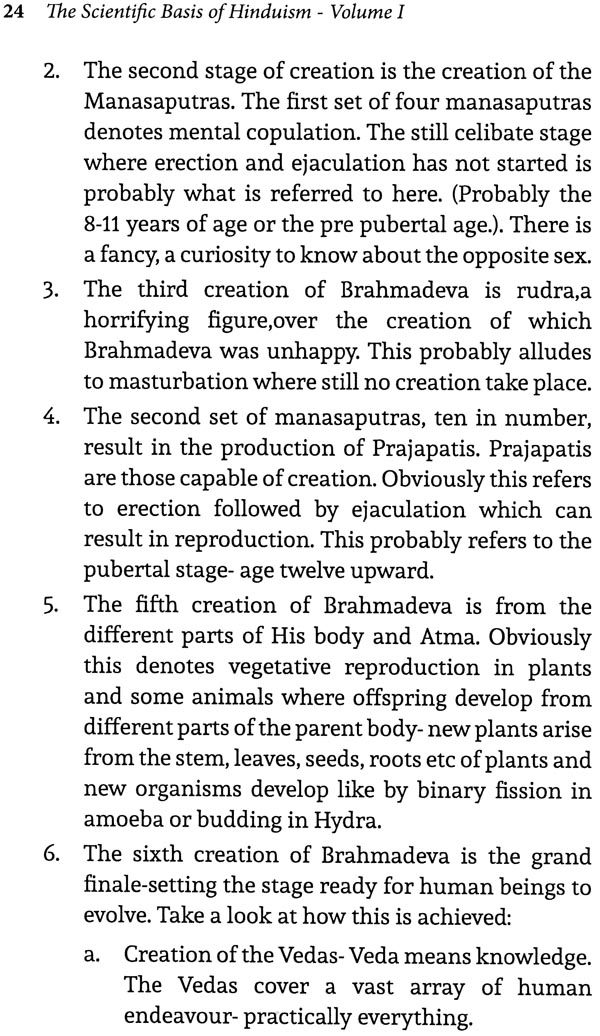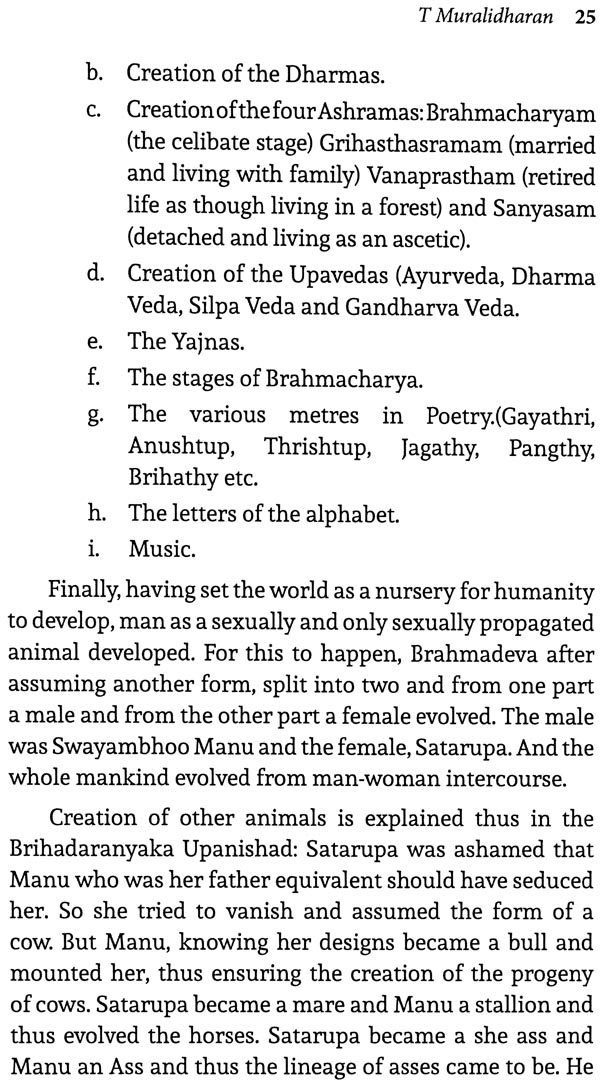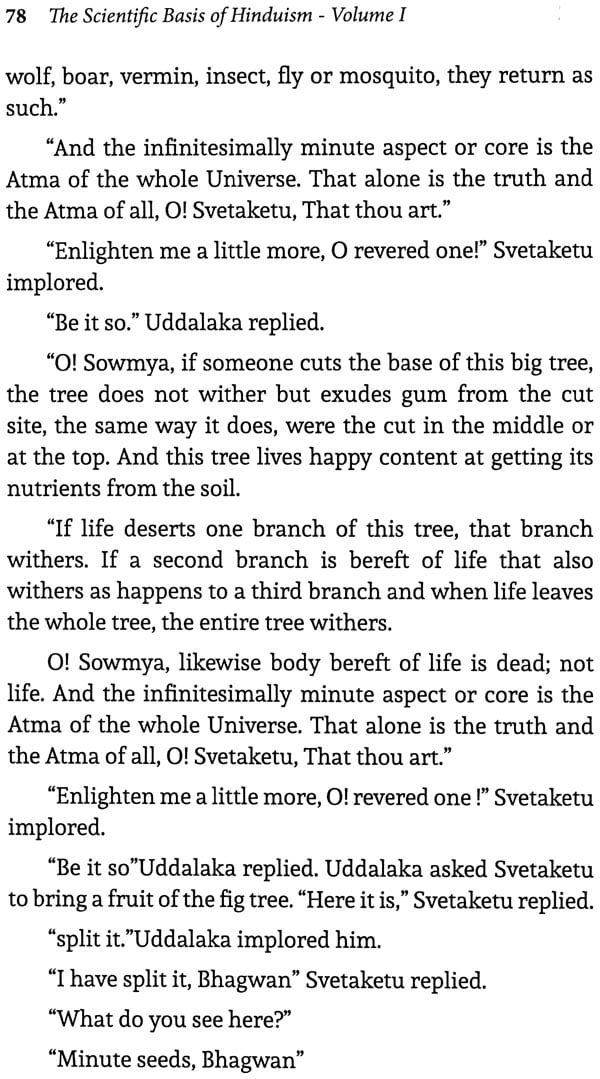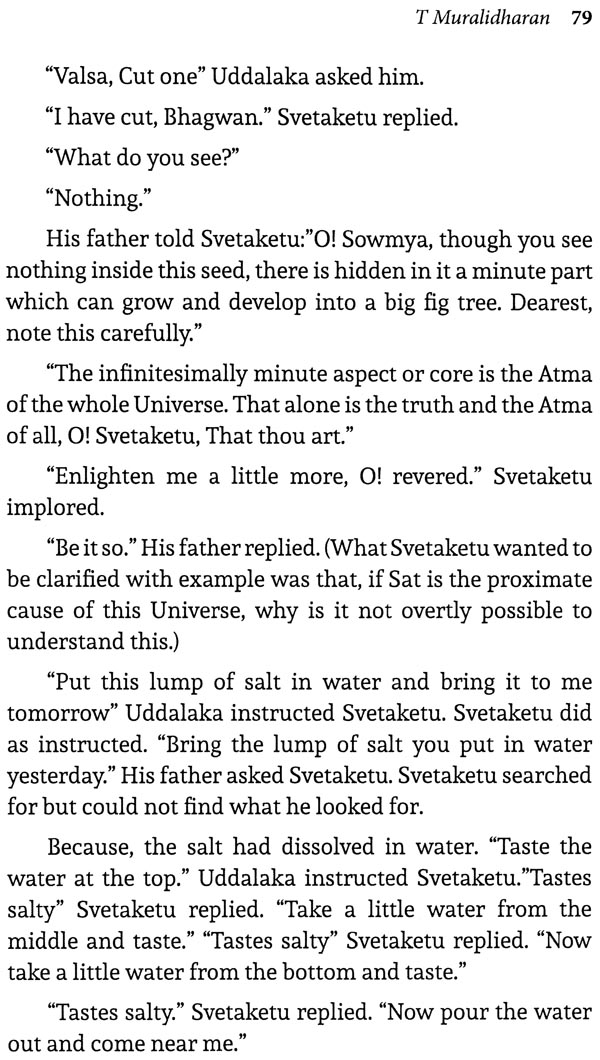
The Scientific Basis of Hinduism- On Pranava Mantra, Tri Murthis, Mahavakyas, Rebirth, The Soul and Advaitha Philosophy
Book Specification
| Item Code: | NAR164 |
| Author: | T. Muralidharan |
| Publisher: | Notion Press |
| Language: | English |
| Edition: | 2016 |
| ISBN: | 9789386009814 |
| Pages: | 140 (11 B/W Illustrations) |
| Cover: | PAPERBACK |
| Other Details | 8.00 X 5.00 inch |
| Weight | 140 gm |
Book Description
The doctrine of Sanatana Dharma acquired a tag, Hinduism during the passage of time, when or why, no one seems to be sure. The word Hinduism is a misnomer – the word Hindu is mentioned nowhere in the scriptures as is the term "Hindu mythology." When comprehension became difficult, all that is inexplicable found refuge under the term mythology.
Were the ascetics who lived in forests and mountains foolish enough to portray the picture of a God, who finds His perch on top of a serpent in an ocean of milk? Or a creator finding His work place atop a lotus that springs from the navel of Vishnu? Or that Lord Shiva should be polymorphic with the visage in one form, sporting all sorts of weird articles as ornaments, half feminine in another and a phallus in yet another form? If such descriptions defy comprehension, it only means the inability to understand allegory.
The author has tried to unravel all these in layman’s logic and is not trying to masquerade in mysticism when confronted with the inexplicable. The book begins with the Pranava mantra and then it cruises through the Trimurthis, their significance, the mahavakyas and ends in the soul and the advaitha philosophy with an insight on how Science sees all these.
Muralidharan started his professional life as a General Medical Practitioner in Kollengode in 1975. After a short stint as a GP and later as a Medical Officers in Kerala Health Services, he did his post-graduation in Ophthalmology, first at JIPMER, Pondicherry and then at the Calicut Medical College, finishing his MS in 1987. Not long afterwards, he left Government Service and settled down at Palakka as a General Ophthalmologist. His interests are diverse and include reading, writing, agriculture and association activities,. He has served twice as the Secretary of Indian Medical Association, Palakkad Branch and twice as its President. He has self-published a couple of books and writes in English as well as in Malayalam.
At the outset I question the propriety of my writing this book for two reasons: first, I know no Sanskrit and hence have not read any of the original Vedas, Puranas etc. which are written in Sanskrit, but relied on the translations and explanations of the verses given by experts in the field. (The Upanishads by Mridanandaswamy in Malayalam published by Sri Ramakrishna Math Trissur mostly). Secondly, I am an ordinary student of Science, without much exposure in the vast arena of scientific knowledge. Hence this is mostly a layman's attempt to understand some of the facets of the fascinating subject of Hinduism, meant for lay people, and hence mistakes and misinterpretations are bound to be legion.
Many learned people including judges have, after careful assessment, noted that Hinduism is not a religion, but is a way of life. This is for various reasons: Hindus are not incarcerated in the ramparts of religious dogmas; there are no religious heads who overrule individual freedom. Hinduism does not denounce other religions and theist or atheist, believer or non believer, could all still be Hindus. A Christian calls a non believer in his faith as a heathen, a Muslim calls him a Kafir while a Hindu calls such a person a human. While there are umpteen numbers of Puranas, epics and other scriptures, a Hindu is not expected to know or follow any of these. Going to places of worship is not compulsory, nor worship itself. It demands nothing but contains everything. Moreover the pivot of Hinduism is the Vedas. Veda means knowledge. And knowledge means Science. When we see the Sun in the sky, we know it as a dazzling object, red or white in the sky. As our Scientific knowledge increases, we know the Sun as the pivotal point in the Solar System, with nine planets revolving around it; that, it is a mass of helium, is the source of all energy in the world and what not. And scientific knowledge changed the way of life from how our forefathers lived to how we live today. And that is why Hinduism guided by the Vedas is Science.
Vedas, like the Lord are not the creation of anyone. They, like the Lord, are supposed to have originated de novo. Veda Vyasa is credited with having passed on the Vedas to posterity through his disciples. Scriptures are the mainstay of any religion. The Holy Bible is the scripture of the Christians; the Holy Koran that of the Muslims, The Guru Granth Sahib that of the Sikhs and so on. Most religions have only one scripture. Probably conforming to the opinion that Hinduism is not a religion, consider the plight of a Hindu with:
Four Vedas and their Upavedas (subsidiary Vedas-numbering five).
The one thousand and eight Upanishads of which only one hundred and eight are known and twelve only recovered.
The one hundred and eight smruthis,
The six Darsanas.
The two epics (Ramayana, Mahabharata)
The eighteen Maha Puranas and another eighteen Upapuranas.
The Brahma Sutra and
The Bhagavad Gita
(The list is not complete.)
The Hindu scriptures are neither uniform in their content nor entirely divine in their concept. For example the Rig Veda, which extols Vishnu, Siva, Saraswathy and Indra, has, as its upaveda, Ayurveda which deals with an entirely different subject, namely the science of healing. The Yajur Veda details the ways yagnas are conducted and how Gods are worshipped but its Upa Veda is Dhanurveda which deals with how wars are fought, armoury, martial arts etc. The Sama Veda contains the same Mantras as in Rig Veda but tells us how these are chanted in a musical way, while yajnas are performed. Its Upaveda is Gandharva Veda which tells us about music and instrumental music. The Atharva Veda is at times considered not a Veda at all. It teaches us how to dodge dangers, protect from enemies, self defence, and the way to prosperity. It also deals with black magic. The Atharva Veda has two Upa Vedas namely Silpaveda which deals with construction and Artha Veda which deals with daily life, social structure, politics etc. Thus the Vedas teach us from mantras to music and construction to copulation-in short the stark realities of life.
For about six decades, I was an ordinary Hindu- which I still continue to be-going to the temple once in a while and praying many a God. I accepted the existence of God in whatever form they were pictured, never caring for the meaning of anything. But for more than a couple and a half decade, it had been nagging my mind that the scriptures of Hinduism had meanings more than what meet the eyes. My doubts were ratified when I once chanced on a lecture by the great scientist and scholar, Dr. N.Gopalakrishnan, and taking the cue from him, I began to think why whatever I was exposed to should not be analysed in a way different. And the result was marvellous. I found that whatever I had hitherto understood had a meaning, an explanation totally different and that Hinduism is nothing but science. If the question were to be raised as to why all the fanfare of Vedas Puranas etc, the answer is simple: it is understood better thus than as pure science. Of all the people studying science which run into trillions, what fraction retains any of what they had studied? Hardly any. But when presented as folk lore the retention is much better.
The Rishis who were the exponents of Hinduism were not ordinary people. They were people with intelligence beyond the extra ordinary genius and common sense beyond compare. It is preposterous to believe that they would conjure up the picture of a God wearing all sorts of weird articles as ornaments and dancing frantically when provoked. Or that another God should sleep over a snake in the middle of an ocean of milk as though there was no better place in the Universe. Or the Creator himself should stay in a lotus on the charity of Lord Vishnu, precariously balancing on His navel. If our scriptures abound in such descriptions, it only means one thing- that they are metaphorical and that the language of the scriptures is allegory.
**Contents and Sample Pages**
